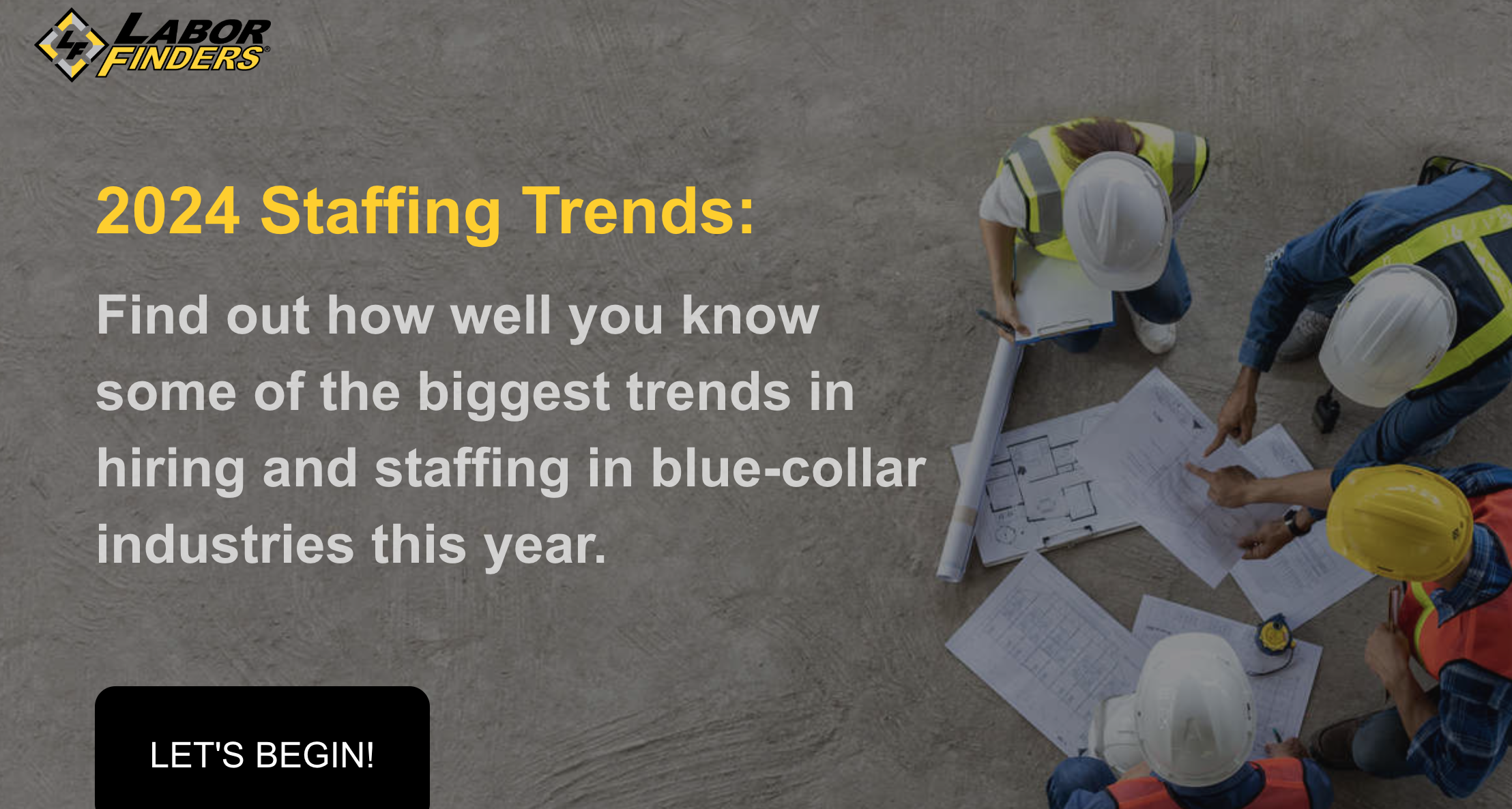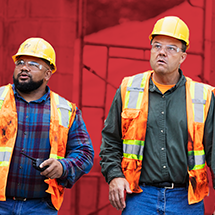-
Job Seekers
X
Job Seekers
Whether you're looking for a temp job or a permanent career, Labor Finders has you covered!
-
Explore
- How it works
- Industries
- Blog
- Locations
- Job Search
You May Also Be Interested In

2024 Employee of the Year
Learn more about our amazing Employee of the Year
-
-
Employers
X
Employers
Let us help you find the workers you need, when you need them.
You May Also Be Interested In

2024 Staffing Trends Quiz
Construction Staffing Trends Quiz
-
Industries
X
Employer Industries
Ready to staff your next project? Our staffing experts has the knowledge and the workers to cater to your unique staffing needs.
In this Section:
Job Seeker Industries
From construction to waste management, we have job openings in whatever industry you’re interested in.
In this Section:
-
About
X
About You
Getting matched to the right job, gaining the flexibility you want, making an impact in your community - at Labor Finders, it’s all about you!
-
You may also be interested in
- About Us
- Job Search Results
- Find an Office
- How it works
- Blog
About Us
With almost 200 offices nationwide, we’ve been putting people back to work for over 40 years. See why we’re a leader in the blue-collar staffing industry.
-
You may also be interested in
- About Us
- Media Center
- Video Library
- Leadership Team
- Careers
- In The Community
- History
-
- Location
Employment Readiness
Getting Started as a Formwork Carpenter

Constructing wood frames or putting down wood floors isn’t the only type of carpentry work you can get into. Form carpenters, also known as rough carpenters, are important members of a construction team. Here’s what you need to know about this career.
What is Formwork Carpentry?
Before we get into what a formwork carpenter does, let’s break down exactly what formwork carpentry is. Before a building, bridge, or home can be built, it needs a strong concrete foundation. Forms or frames are constructed out of various materials so concrete can set into the foundations and frames outlined in building plans. Once the concrete is firm and set, the forms can either be removed or become part of the final structure. The types of forms that these carpenters work on include:
Timber Formwork: These forms are made out of timber or plywood. Timber forms are flexible and easy to put together.
Re-usable Plastic Formwork: These lightweight forms are made of interlocking pieces that can be taken apart and reused again.
Engineered Formwork: Pre-made modules of aluminum or steel create this type of formwork system that can also be used over and over again.
Permanent Formwork: Using insulated concrete forms, this type of formwork is constructed onsite and stays in place once the concrete dries.
What a Form Carpenter Does
In this line of carpentry, workers come to a construction site in the early stages of the project. There, they cut materials to the specified measurements on the blueprints and assemble the forms. They’ll use tools like drills and electric saws to put the pieces together and fasten them into place. Formwork carpenters spray the forms down with oil (so the concrete doesn’t stick) and insert steel rods for reinforcement. Then the concrete is poured in. Once it sets, formwork carpenters remove the forms, clean them and get them ready for the next project. Other things form carpenters may do on a job site include erecting scaffolding, constructing chutes for concrete, waterproofing materials, and maintaining tools.
The Training You Need to Get Started
So now that you know what form carpenters do, how can you get started in this career? By getting on-the-job training through entry-level jobs like a carpenter’s helper or an apprenticeship program offered by a trade school. As a matter of fact carpenters, in general, get started by enrolling in a 3 to a 4-year program where they get the hands-on training they need to advance. Once they complete the program, they can go after carpenter jobs like this one.
What to Expect in this Career
The work of a form carpenter requires strength and stamina because there is a lot of heavy lifting involved. You’ll also be working on your feet for long periods of time. In this job, you’ll need to be organized so you can keep track of the form carpentry process – from getting form materials to removing them once the concrete sets. Form carpenters are comfortable reading blueprints, handling power tools, and building codes. This career also requires great attention to detail, making sure the forms are level and square.
Ready to jump on getting that on-the-job carpentry experience? Click to connect with one of our personal job agents.















